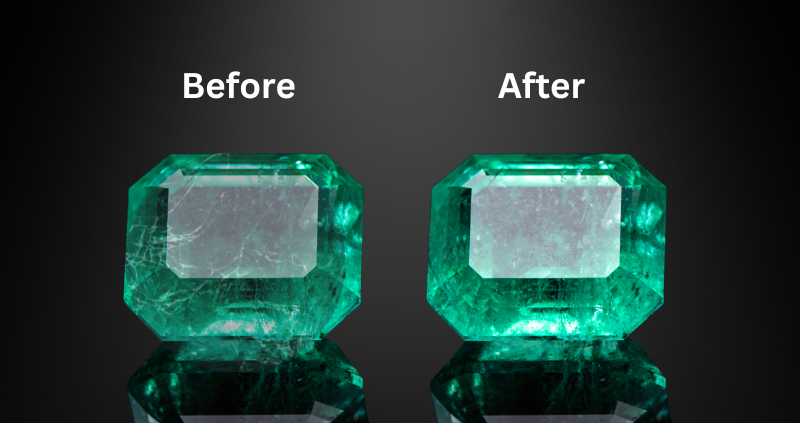Understanding Gem Treatments: Enhancing Beauty, Ensuring Value
Gem treatments are done to improve the colour, clarity, and overall value of the stones. Knowing about gem treatments can help you make informed decisions while buying jewellery.

Gem treatments are a common practice in the jewellery industry. It involves enhancing the appearance of gems using various techniques such as heat treatment, irradiation, bleaching, fracture filling etc. Gem treatments are done to improve the colour, clarity, and overall value of the stones. However, it is crucial to identify treated gems before buying, as the treatments can affect their durability and value. Knowing about gem treatments can help you make informed decisions while buying jewellery.
Types of Gem Treatments
Heat treatment means heating gems at high temperatures to modify their colour and/or clarity. Under typical handling circumstances, the heat treatments applied to these gemstones are considered durable. This treatment is commonly used on gemstones like sapphires, rubies, and topaz. It can be detected by a qualified gemologist.
Irradiation is a process of using artificial radiation to change a gem's colour, sometimes followed by heat treatment for additional colour modification. This treatment is often used on gemstones such as topaz, diamonds, sapphires, and tourmaline. It requires advanced techniques to detect irradiation. Irradiated gems differ in durability, caution is needed to avoid exposing them to high temperatures.
Bleaching is a treatment that lightens or homogenizes the colour of gemstones using a bleaching agent. Pearls, jadeite, and coral are commonly bleached gemstones. Detecting bleaching can be challenging, even with magnification.
Dyeing involves treating gemstones with dyes to enhance or alter their colour. This treatment is commonly used on porous gemstones like turquoise, pearls, and black onyx. Dyeing can fade over time or with exposure to heat or chemicals.
Surface coating means altering a gems appearance that involves adding colour agents like paint to back surfaces of gems. Due to their soft nature and limited adhesion to the gem's surface, thin-film coatings can be easily scratched, particularly at edges and intersections of facet. It is commonly done on cabochon-cut gemstones like turquoise, lapis lazuli, and jade. Surface coating is not permanent and can be easily scratched or worn away.
Laser drilling is a process where a laser beam is utilized to create an open pathway from a diamond's surface to access dark inclusions. Usually followed by the use of a chemical that is pushed into the pathway to break down or change the way the inclusion looks. This treatment is commonly used on diamonds.
Impregnation is a treatment in which a polymer, wax, or plastic is infused into the surface of a porous gemstone to enhance both its durability and visual appeal. Impregnations are shallow and are vulnerable to heat damages arising from the low melting points of plastic and wax. This treatment is commonly used on porous gemstones like turquoise and jadeite.
Lattice diffusion is a treatment that alters the colour of gemstones by introducing chemicals into their atomic structure. It is commonly used on corundum gemstones like sapphires and rubies. Lattice diffusion can fade over time or with exposure to heat or chemicals.
Fracture or cavity filling is a treatment in which gems' surface fractures are filled with colourless substances like glass, resin, or oil to enhance clarity, appearance, and stability, sometimes adding a bit of weight. Durability depends on the type of filler. Glass is tougher than resins, oils, or waxes. Commonly used on diamonds but can weaken the gemstone and increase its susceptibility to damage.
How to Make Informed Decisions
There are a number of things to keep in mind. First, it's important to buy from a reputable source. This includes jewellers and dealers who are known for their honesty and transparency. You should also request certification for any gems you buy. This certification should provide information about the gemstone's origin, treatments, and other important details. Additionally, using a loupe or microscope can help you examine a gem closely and detect any treatment it may have undergone. Finally, it's important to be aware of pricing trends and what constitutes a fair price for a given gemstone. Remember, knowledge is power when it comes to buying gemstones, so always do your research and shop smart!

